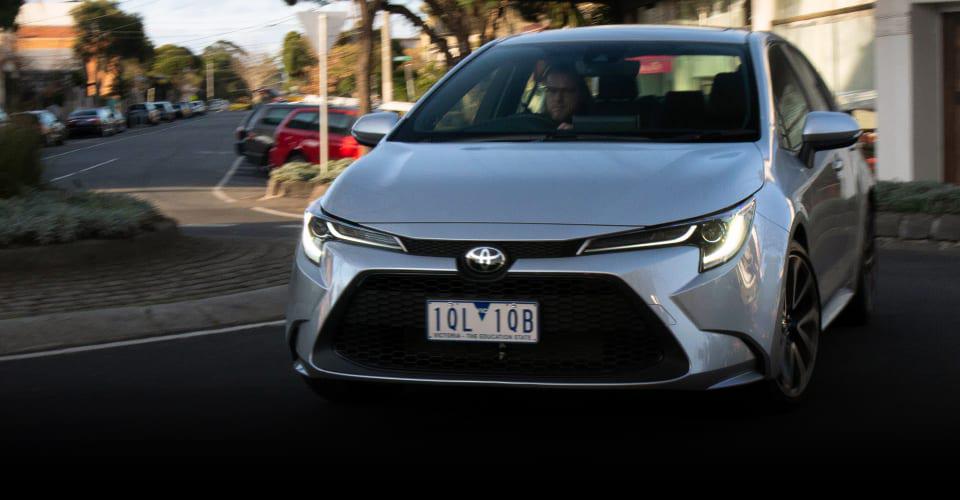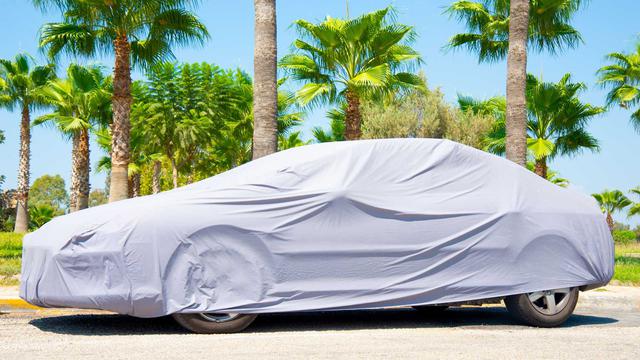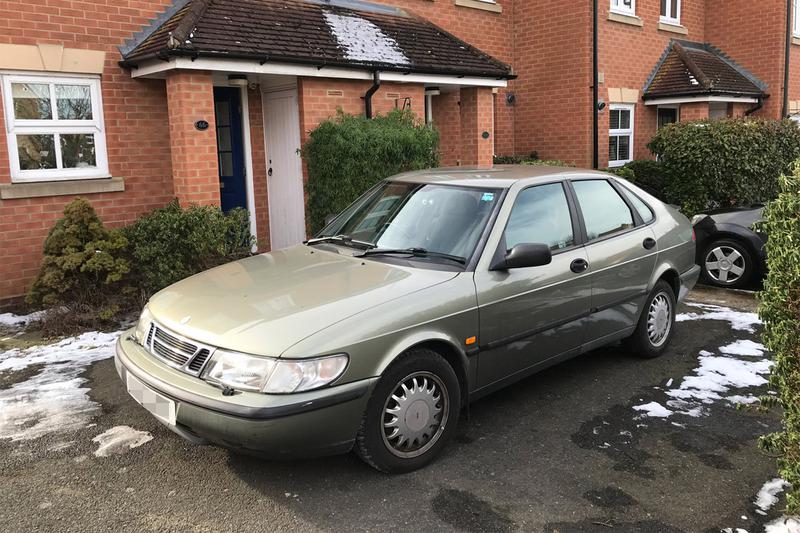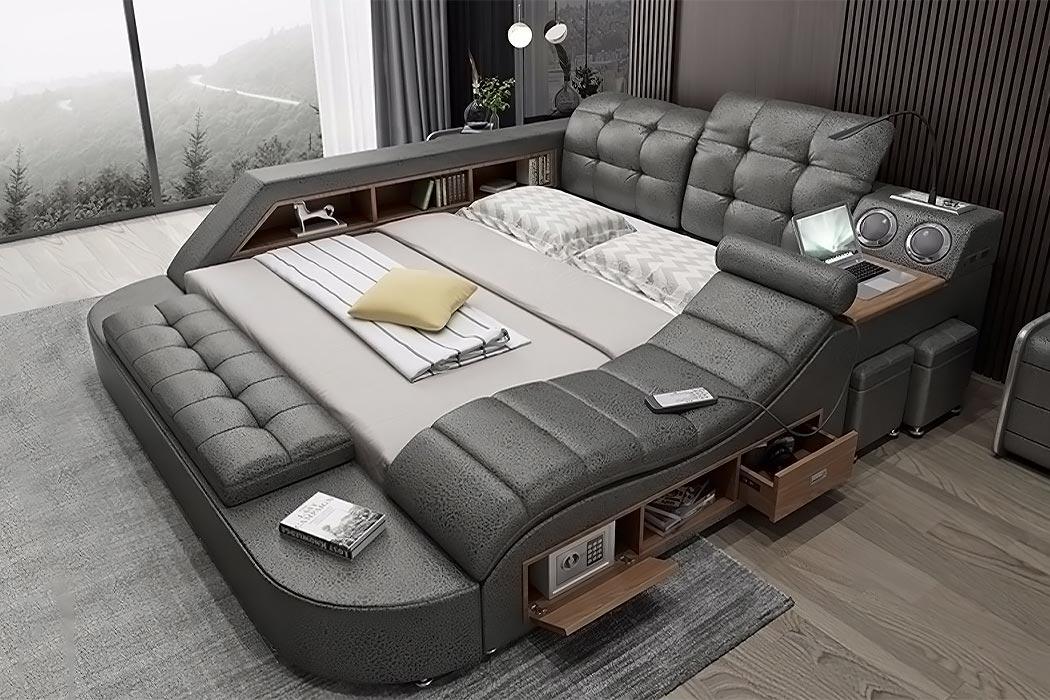Although the hatch had the headstart with a small launch lead, the entire Corolla family for Australia is up and running. Like the hatch, the Corolla sedan comes in three model grades: Ascent Sport, SX or top-shelf Corolla ZR – like the car you see here.
There are a few differences, though. The sedan is longer overall, which is probably no surprise given its longer boot, but it also rides on a longer wheelbase with the front and rear axles further apart – freeing up more space for passengers inside.
There’s also some minor specification differences. Hatch and sedan are sourced from different Japanese factories, which may explain some of the differences, but they’re also aimed at different buyers. The hatch is sporty and a little more youthful in its approach, while the sedan tends towards a more conservative buyer.
There’s nothing too major to split the pair, though look closely and you’ll see the front bumper is ever so slightly changed, the front seats of the sedan aren’t the racey looking hip-huggers from the hatch, and the spec sheet is a little differently populated.
The $33,635 (plus on-road costs) Corolla ZR sedan is $1500 more than an equivalent hatch – perhaps down to the extra length and metal required to fill it? And, unlike the hatch, the sedan doesn’t come with a petrol-electric hybrid option.
Instead under the bonnet it runs Toyota’s new-generation 2.0-litre naturally-aspirated engine producing 125kW and 200Nm. It’s linked to the front wheels via a ‘direct shift’ CVT automatic which features a traditional first gear before switching to a shiftless continuously variable transmission.
Spec highlights shared between hatch and sedan include 18-inch alloy wheels, proximity key entry with push-button start, driver’s head-up display, wireless phone charger, 7.0-inch instrument display, 8.0-inch infotainment with navigation, digital radio and smartphone mirroring for Apple CarPlay and Android Auto, heated front seats and a power-adjustable driver’s seat.
Perhaps a little oddly, the sedan comes only with single-zone climate control (the hatch is dual zone), slightly odd looking striped faux-leather seat inserts instead of suede-look, and misses power folding mirrors and park sensors. There is a sunroof however, which the hatch lacks. Oh, and the spec sheet insists the ZR comes with rain sensing wipers, although try as I might in a variety of conditions during a fairly wet week, they never actually sensed any rain.
There’s also a quirk with the tail lights. They’re LED lights, just like the hatch, but unlike the detailed light pipes of the hatch or previous sedan, Toyota has used a reflector housing with an LED ‘bulb’ in the middle instead of making the most of the tech. Number plate, reverse and Headlights are LEDs too, though you’ll still find incandescent bulbs used for the rear indicators.
Interior design is a solid step up from the older generation. It’s more integrated, and more sporty to look at. Not over the top, mind you, but the play of lines from the centre, that rise to the outer edge of the dash, that pick up the silver spear and AC vent housing, that leads back the island of climate controls, that has the tablet-style screen protruding from it... it all looks good.
The impression of quality is lifted thanks to stitched details, though the real thread in the dash top is a bit more convincing than the moulded marks on the lower facing panel. Ergonomically it works pretty well, is clear and well labelled, but the narrow console isn’t overflowing with storage options.
There’s even hints of ambient interior lighting. A small touch, but one that works wonders to boost the impression of fanciness at night.
Toyota’s infotainment system is still pretty basic. On the plus side, that makes it quite easy to use, but the down side is low-res graphics and a low-contrast screen that can be harder to read during the day. Smartphone pairing makes familiar functions easy to use and expands the AM/FM/DAB entertainment capabilities, though it would be nice if the USB plug wasn’t just slapped into the dash the way it is.
Always a positive, the air con is super-cold. Not always required in winter, but for an Aussie summer there’s little that can match the Corolla for cool-down speed in the small car class.
The front seats have a bit of shape to them and are supportive without being too grippy. They are sport seats with a touch more shade than lower grade models, just not as super-sport looking as those found in the ZR hatch.
The rear seat is quite comfy. There’s genuine space there for adults – no, it isn’t limo like and passengers will have to remain upright and can’t stretch out without finding the front seats but for growing families or short-trip urbanites it’s very much up to the task.

Improved as it may be in the rear there’s still no face-level ventilation, or things like rear USB points to keep devices topped up on the go so you may be forced to make conversation with your passengers.
Boot space is an incredibly hand 470-litres, plus the seats can be folded (in a 60:40 split) to handle bigger items and a space-saver spare lives beneath the floor. For some boot size could be the deciding factor alongside the ZR hatch and its 217-litre boot, although the Corolla sedan still trails the 502L Kia Cerato and 519-litre Civic Sedan on outright capacity.
Around town there’s plenty to like about the way the Corolla drives. The engine has enough urge to feel capable in city traffic and the way Toyota has set up its automatic gives a nice positive feel when starting from a stop, before blending into smooth seamless changes on the go.
It’s not always perfect. From more spirited starts the physical first gear setup betrays plenty of vibration, which shudders through the whole car, accompanied by a very noticeable whine.
The engine doesn’t give a whack of torque from down low, but that makes it nice and easy to drive smoothly and predictably. Your Corolla won’t furiously spin tyres in the wet or chirp angrily, but as engine speed climbs it finds a robust midrange that’s quite useful and provides a pert zippiness for rolling through traffic.
Away from city streets, the Corolla ZR sedan is perhaps a little less at home. It needs a decent run-up and plenty of warning if you plan to overtake, and on rural roads you’ll notice plenty of tyre noise, plus the low-profile tyres on 18-inch wheels show up bumps and dips in the road surface more readily than the chunky-tyred 16-inch wheels on lower grade models.
That's not to say it's rudely uncomfortable. Far from it, in fact, but the big wheel aesthetic does dial back ride comfort compared to other models in the range.
Toyota’s safety suite reads like that of a premium model from just a few years ago, with a long list of driver-assist features including adaptive cruise control, auto high beam, lane departure alert with steering assist, lane trace assist, autonomous emergency braking with pedestrian and cyclist detection, blind spot monitoring, rear cross traffic alert, speed sign recognition and more.
Lane trace works well to keep you within lane markings, but is highly dependent on the sensitivity setting. Set to the highest, the steering wheel twitches and pulls from your hands a little too much, but you can dial assistance down a touch for a much more natural feel.
Adaptive cruise control is great at highways speeds, though if traffic gets held up, it feels less natural at low speeds and tends to brake late and feel erratic if traffic slows below about 70km/h. That said, the assist functions are better to have than not, where appropriate.
The Corolla ZR also packs in seven airbags, a pair of rear ISOFIX child-seat mount points, and a reversing camera, though through the low-definition centre screen it only offers a hint of what’s behind and lacks active guide lines.
City and suburbs, or commuting and school runs seem to fit the Corolla best. It’s a little more fun to drive than it’s been for quite some time, but it doesn’t quite strike the right note in every situation out of town.
It isn’t trying to be a performance car, but the new underpinnings give it a keener driving feel with more responsive suspension and steering that feels connected and lively without being relentlessly nervous.
Warranty coverage spans five years with no kilometre limit for private usage (or 160,000 for cars used for commercial purposes) but Toyota also applies an extra two years of engine and driveline coverage for cars that are serviced on time and according to the factory schedule. Your dealer can help you with the full terms and conditions.
If you service with your Toyota dealer, you’ll find fixed-price servicing at 12 month or 15,000km intervals. Up to the first five visits, service pricing is a highly competitive $180 per service including all scheduled filters and fluids.
Fuel watchers will note that Toyota provides an official 6.0 litres per 100km fuel figure, which grew to 7.8L/100km after a mostly urban week of zipping too and from the office and an out-of-towner to see the in-laws. The elephant in the room is the lack of a hybrid version, with the ZR sedan being the only Corolla trim level not to offer the option where all others do.
Without being too daring – as with the Corolla hatch – Toyota has struck a neat balance between user friendliness, premium features, day-to-day practicality and welcoming familiarity.
There may still be a slightly unpolished edge here or there, but for the most part the Corolla ZR sedan is a gem – albeit one that might fly under the radar alongside its more showy hatchback counterpart.




